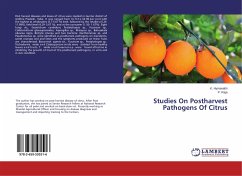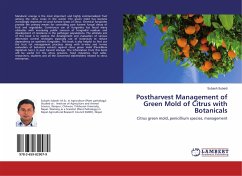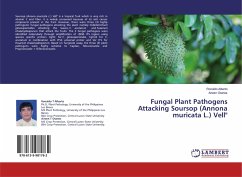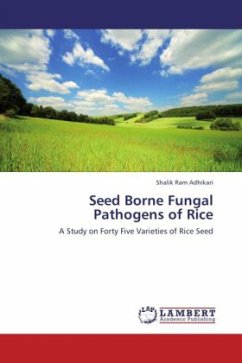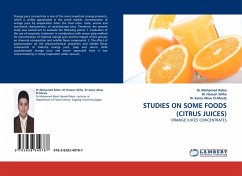Post harvest diseases and losses of citrus were studied in Guntur district of Andhra Pradesh, India. It was ranged from 14.73 to 34.96 per cent with the highest at wholesalers (3.7-5.67 %) level, followed by the retailers (5.24-11.99%), field level (4.29- 5.67 %), and at the consumer (1.50- 1.67%). Eight fungi viz,. Geotrichum candidum, Pestalotiopsis sp., Fusarium sp., Colletotrichum gloeosporioides, Aspergillus sp., Rhizopus sp., Bahusakala olivacea nigra, Botrytis cinerea and two bacteria: Xanthomonas sp. and Pseudomonas sp. were identified as postharvest pathogens on mandarins, sweet oranges and acid limes and the symptoms produced on these fruits are characterized. Biocontrol agents viz., Fusarium sp., Pestalotiopsis sp., Trichoderma viride and Cladosporium viride were isolated from healthy leaves and fruits. T. viride and Fusarium sp. were found effective in inhibiting the growth of most of the postharvest pathogens, in vitro and in vivo condition.

